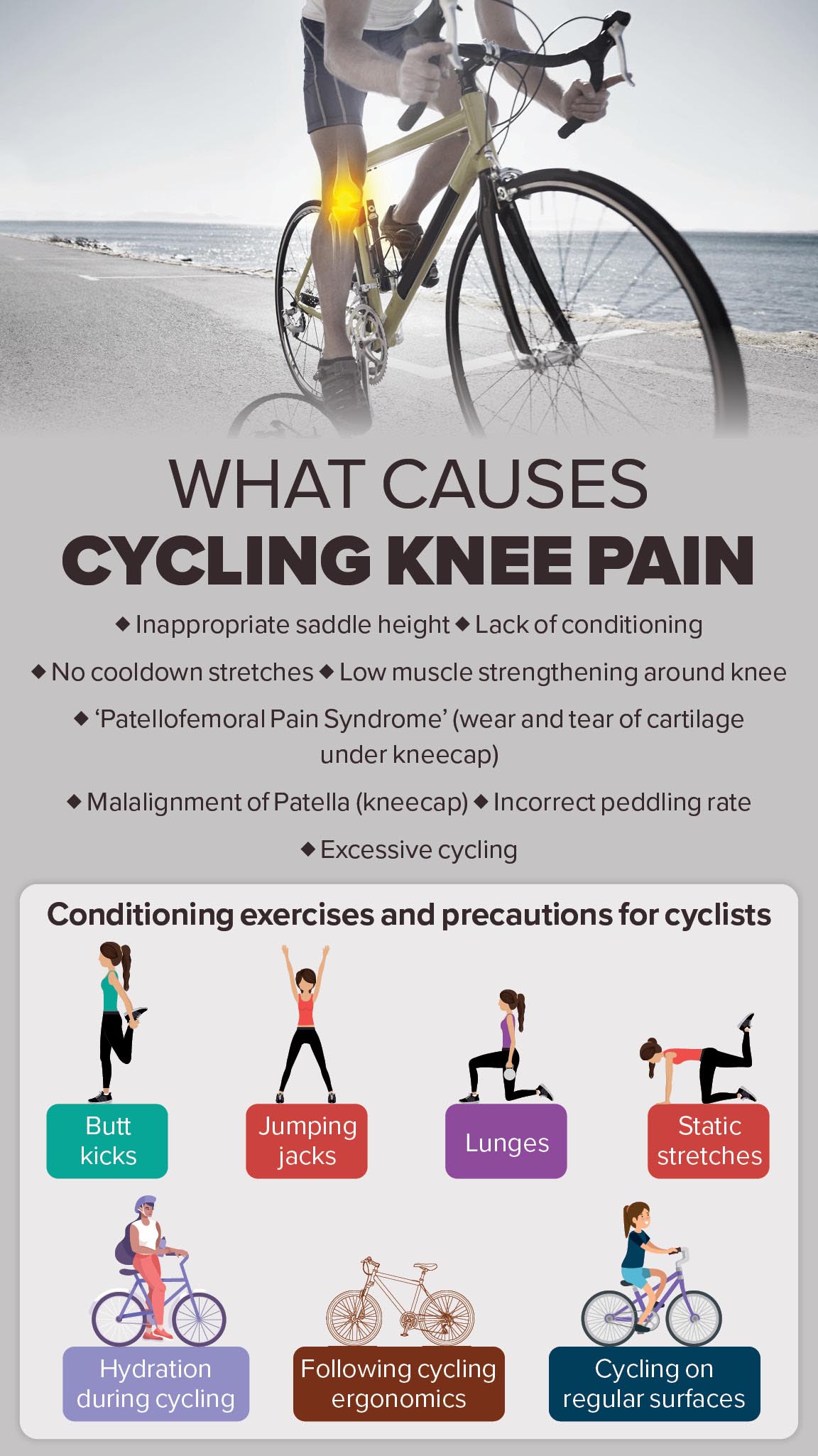
Cycling has been part of your fitness routine, and you have been improving your performance over the years. However, of late, mild knee pain grips you each time you push the envelope on the saddle. You are perplexed. Running is meant to cause knee pain, not cycling, right?
Well, you are not alone. There are many cyclists who suffer from knee pain. Most overlook it too, without understanding the causes or consequences. A 2017 paper titled, Knee Problems and its associated factors among active cyclists in Eastern Province, Saudi Arabia, by Magdy Darwish Et. al., noticed the overall prevalence of knee pain among respondents of the study (cyclists) was 25.8%. It was 27.6% for amateur cyclists and 15.9% for professionals. The majority of the cyclists reported the pain as mild (61.6%), or moderate (28.7%).
What causes cycling knee pain?
Bengaluru-based senior physiotherapist and sports performance enhancement specialist, Gopakumar V, agrees cycling is easy on the joints.
“Cycling is gentler on joints thus allowing to exercise longer and burning more calories while it also helps in muscle strengthening around the knee,” says Gopakumar, founder of Core Physio Academy of Sports. “But excessive cycling can cause knee pain and apart from this factors like bicycle misalignment, lack of conditioning before cycling, the inappropriate distance between the saddle and the pedals, Patellofemoral Pain Syndrome (wear and tear from overuse of cartilage under the kneecap), malalignment of Patella (kneecap) can also cause or exacerbate knee pain.”
The pain ranges from mild to moderate.
“If a cyclist is experiencing pain in the knee, then the cycling activity should be stopped immediately and a break should be taken,” says Gopakumar. “Stretching of muscles around the knee joint should be done and if the pain persists then a physiotherapist should be consulted who will evaluate and prescribe the plan of action for decreasing the knee pain.”

How cyclists avoid knee pain
New Delhi-based teacher Gurleen Kaur, who has been taking part in long-distance cycling since 2014, including ultra-cycling and multi-day tours, says the saddle height of her bicycle plays an important role in keeping the load off the knee joint.
“If someone is thinking about the knees during cycling, then saddle height is the most important thing to be kept in mind,” says Kaur. “If the saddle is too low, then there will be a pain in the front of the knee, and if it’s too high then the pain will be in the back of the knee. Along with this, warming up and warming down is equally important and if someone is doing long-distance cycling then stretches should be done in the breaks.”
Kaur adds that cycling every day is also a strict no. She recommends a combination of cycling for three days a week with strength training, core conditioning and running. And the intensity or distance should be increased gradually. As far as equipment is concerned, costly bicycles need not mean you won’t be injured. It is about getting the geometry of the bike right based on your body vitals.
How to set the saddle
The height of the saddle depends on the height of the cyclist. There are two easy ways to set the height of the saddle.
In the first method, the saddle is set based on the bend in your knee while seated. The pedals should be set in a ‘6 to 12’ clock hands position. The ideal seat height would be one which allows you to sit and place the tip of the feet on the lower pedal with a slight bend in the knee. If the heel is placed, then the leg should be straight.
In the second method, rest the bicycle on you while standing straight. The saddle should be aligned with your waist.
Professional cyclists or those aspiring to do longer distances should do a bike fit, measuring the various parameters using a bike fitting machine.
Takeaways
- Knee pain while cycling is a common occurrence, especially among those who do it daily. A combination of cycling with strength training and running should help avoid it.
- A proper warm-up and warm-down routine is essential in cycling to keep the niggles away.
- Improper saddle height, misalignment of the bicycle and improper ergonomics could cause knee pain while cycling.


















5 Responses
Quite useful
Thanks for your positive response!
I cycled for 3 hours and I feel pain in the back of my right knee
साइकिल फिर रोज नहीं चलाना चाहिए क्या जो मेरा प्रश्न है
Thank you for your query. However, we at Happiest Health do not give any medical advice.